#RUDBECKIA DRUMMONDII
Explore tagged Tumblr posts
Video
n202_w1150 by Biodiversity Heritage Library Via Flickr: Traité de botanique générale / Paris :Abel Pilon et cie, éditeurs, 33 rue de fleurs, 33,[186-?] biodiversitylibrary.org/page/59539277
#Botany#Plants#PINUS SYLVESTRIS#CORYLUS AVELLANA#SEDUM ACRE#LYCHNIS FLOS CUCULI#VIOLA SYLVESTRIS#HELIANTHEMUM VULGARE#Helianthemum nummularium#DIPLOLOENA DAMPIERI#DIPLOLAENA DAMPIERI#ERIOBOTRYA JAPONICA#ESCALLONIA RUBRA#ORLAYA#MACLEANIA ANGULATA#JUANULLOA PARASITICA#PENTAS CARNEA#PLATYCODON AUTUMNALE#RUDBECKIA DRUMMONDII#Ratibida columnifera#common hazel#ragged-robin#viola#violet#Dampier's rose#loquat#goldfingers#Platycodon grandiflorus#balloon flower#rock-rose
0 notes
Text
MIDWEST/EAST US: I have the following native flower (and one grass) seeds available for cost of shipping, all harvested from either my garden or from nearby parks in small amounts. if you're interested please kofi me here and shoot me a message with your address and what you'd like! amount/availability may vary but I would like to share as much as possible.
before requesting please make sure the seeds you want are native to your state! prairie moon has range maps for many of the species here; otherwise a quick search of the scientific name should let you know.
seeds I have:
-Cup plant (silphium perfoliatum)
-Common milkweed (asclepias syriaca)
-Swamp milkweed (asclepias incarnata)
-Honeyvine milkweed (cynanchum laeve)
-Maypop (passiflora incarnata)
-Bee balm (monarda fistulosa)
-Foxglove beardtongue (penstemon digitalis)
-Purple coneflower (echinacea purpurea)
-Missouri coneflower (rudbeckia missouriensis)
-Showy sunflower (helianthus pauciflorus)
-Cliff goldenrod (solidago drummondii)
-Meadow blazing star (liatris ligulistylis)
-Common evening primrose (oenothera biennis)
-Blue sage (salvia azurea)
-Little bluestem (schizachyrium scoparium)
-Blue mistflower (conoclinium coelestinum)
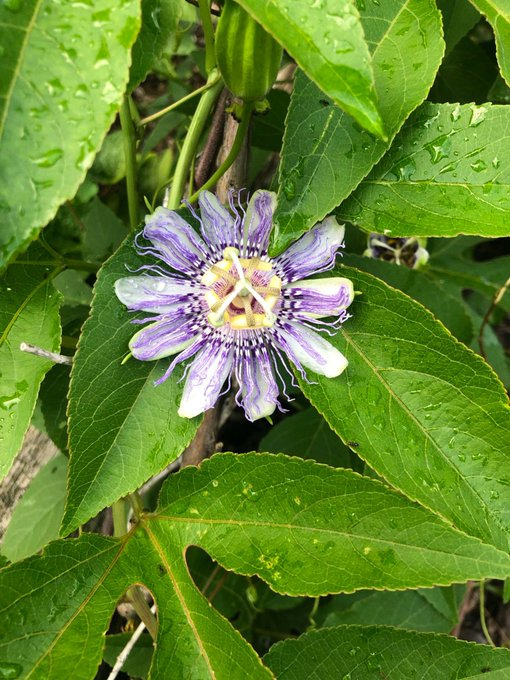

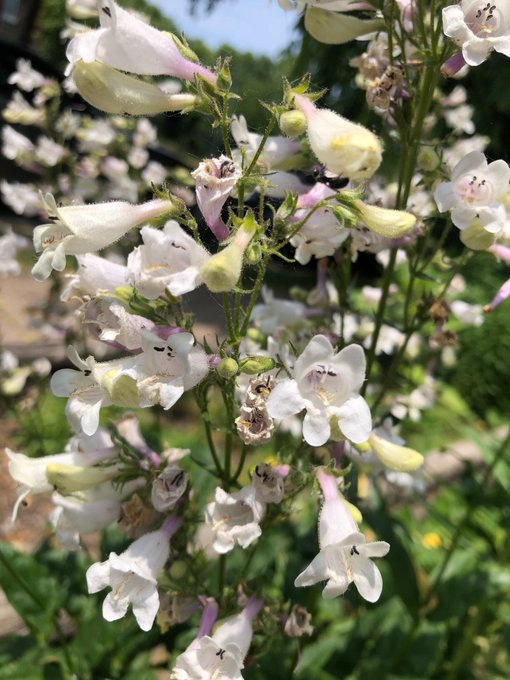
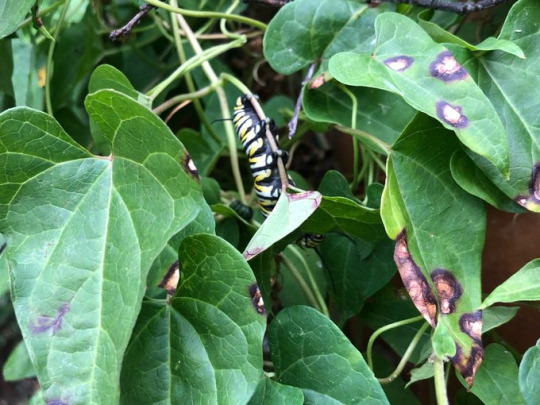
#plants#gardening#native plant gardening#native plants#flowers#prairie plants#free#maypop#sunflower#milkweed#insect gardening#bigeelsplantposting
13 notes
·
View notes
Text
First summer in the "garden"
My little terrace have given me a chance to do some gardening again and I'm a little rust and limited, and with gardening you learn all the time.
A little review of the annual flowers of 2022
Plox drummondii "Creme Brulee": Even though I didn't plant them right away they have grown really well and in a neat compact way. I'll grow these next year as well and I'll see if I can find some other colors as well. I have deadheaded a little but not a lot, still a lot of flowers and no ugly old flowers.
Scabiosa purpurea: A bit floppy and will benefit from growing next to something sturdy. Favorite color was "Black Knight", a dark deep red. I will grow these next year, they are still going strong and flowering. Some deadheading needed but the seed heads are pretty nice too.
Cosmos: Don't know if it's because it's been hot and dry and they are in a bed with a lot of thirsty plants but they have not been as nice lately and the planting is not as thick as the other bed. Not a must for next season. Deadheading needed.
Helianthus "Ms Mars": Grown in one of the beds and maybe it would be better in a taller pot?
Calendula: I did throw a few away as I never got around to plant them all out and I had sown so many of these. "Orange Flash" which I swear smells of rhubarb when you deadhead it, cute and some soft pink peach colors in it. "Ivory Princess", best in the evening just as it's about open or is new. Deadheading needed. Aphids likes it, funny how they are only of the calendula despite being in a box packed with different plants. Some calendula will be grown next year, maybe a new one?
Salvia viridis "Blue Monday": Starting to get a little boring, maybe it's due to the dryness of that bed? I do prefer plants that last a long time but I liked this one
Rudbeckia hirta "Sahara": First one is about to bloom now so a slow one for the later parts of the season. Not sure I have the space for that. I would love to have a few big pots of this ready to take out when other things begins to get boring but I don't.
Cobaea scandens: Very easy to grow and despite being in small pots it grows. I was a little mean to it in the beginning so maybe it would have done better if I was nicer. As far as I recall it's hard to get it too bloom as our summers are often not warm enough but I don't mind the vines as they are, often dark foliage. A little of a hassle to sow as they grow pretty quickly and grabs a hold on things. Maybe be a little too much trouble. You only need to help it on to things and then it climbs on it's own.
Ipomoea "Grandpa Ott": Easy to sow and can be sown cold so it's a space saver. It tends to grow together, the vines wrap themselves around each other and create a thicker vine which is not a super nice look in my opinion, maybe the solution is more? More plants and make a thicker area of vines? I will grow this next season and possibly look for some other color as well. Some deadheading is needed.
Tagetes "Burning Embers": This variety makes a pretty compact bush, lots of bumblebees around it. I never like tagetes before I had this and yes, easy and a filler. Deadheading needed. Might try tagetes tenuifolia as well next year but this one will be back.
Antirrhinum "Black Prince": Abused and not given a fair chance, will be given one next year. Will cold sow it. Despite not been well cared for it bloomed with lovely dark red flowers, they didn't last long but I love the dark foliage and flowers.
Ammi "Green Mist": Hasn't flowered yet, they are about too. I like the dill looking foliage. If I lack space than I guess this might be one that I won't grow but yeah, I just want to grow everything. The foliage is nice as a filler.
Erigeron karvinskianus: Grew pretty slow for me, not a very common plant here as far as I know and some claim this is a tender perennial. It's pretty low and I have it squeezed in between the two raised beds and some basil. I like them in a lot of pictures but it has not been great here. Maybe it's the wrong spot? Probably not a must for next season but I will try and collect some seeds as it was very expensive and not available in my country so I could share some online.
Verbena bonariensis: A little slow growing and have just begun to bloom. They take a lot of space and I don't have much to begin with. They are also tall and it can get windy here so maybe they are not the best choice? I would love to have a big one in an old oak barrel, keep it in a greenhouse over winter and take it out each spring. Probably not a must for next season. But I will try and keep a few cuttings of it over the winter just to try, I did it with basil and tomatoes.
2 notes
·
View notes
Photo
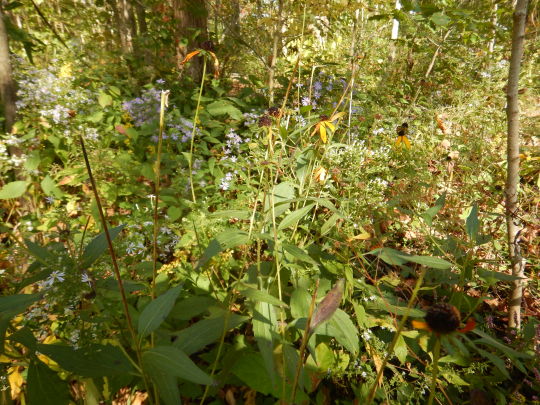


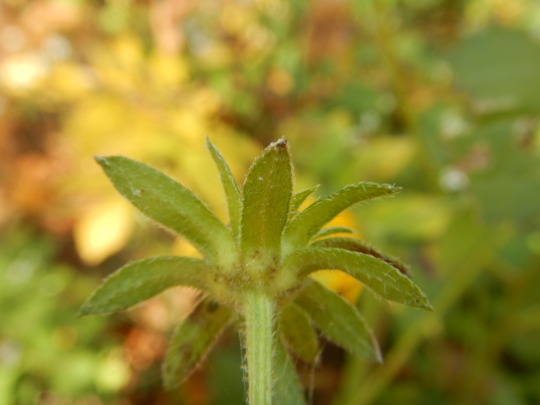

Rudbeckia fulgida var.... growing with Symphyotrichum drummondii and other woodland asters.
While Rudbeckia fulgida complex is probably the worst for finding literature on isolating var. I wanted to give this one a try. Growing on calcareous mineral soil at the upper ridge of Clifton Gorge, not directly in water nor extremely cold permanent water. It was also growing in a section of woods that received dappled shade.
My first thought was it can’t be var. sullvantii due to fen obligation and true wetland obligate status. The second thought was the basal leaves were not dark enough or elongate enough to be var. umbrosia, the appalachian Rudbeckia fulgida, and also it’s difficult to consider that var. for range reasons. Var. umbrosia is also considered to be glabrous(smooth) and glossy. Var. Deamii is a prairie obligate in situ, at one point only occurring in one section of the prairie peninsula from Illinois barrens into Darby Plains and Sandusky Plains Ohio; now the only state that seems to have the tightly clumped surface to subsurface stolon to rhizome multi branched, hairy, clump colony forming var. is Indiana. Var. speciosa is an absolute unit, there for this can’t be it.
In fact i’ve heard a lot of jive about the ploidy of var. speciosa being something crazy enough to separate out of R. fulgida. Polyploid separation is nothing new in evolution and is constantly noted and var. speciosa has some huge leaves, capitulescence stypes, ligules , and leaves.
Other species from glade regions are frequently up for the idea of new species based on localized morphological var. or ecotypic non-plasticity.
https://www.friendsofeloisebutler.org/pdfdocs/rudbeckia_fulgida_abstract.pdf
^this abstract is one such paper that discusses potential separations.
I wanted to show y’all this because this paper immediately mentions a few things to the reader.
Paleae (poeaceae, asteraceae, proteaceae, goodeniaceae) goupings of florets and specifically those bracts that separates each floret from the base of the receptacle.

Unfortunately my camera wasn’t working right in macro mode that day but I tried to take a naked photo of these with the closest one to a successful shot being the blurry one with my hand. The outer floret bracts that greet the ligules are slightly ciliate, the inner bracts non ciliate. These plants did not occur in tight clusters from rhizome(below ground stem used for asexual colony formation or nutrient seeking cloning) or stolon(above ground stem used for asexual colony formation or nutrient seeking cloning). Instead, spread out colonies with single sections of inflorescence sparsely branching from top of the capitulescence(the stype that holds the capitulum and cauline leaves in asteraceae) with one- 3 capitulum rarely (aster family flower cluster) per individual per. plant. The involucre(the bractoid lads at the base of the receptacle) were sparsely pubescent(hairy) and cauline leaves scabrid (rough) and pubescent(almost stiff/hispid) while basal leaves were pubescent/ ciliate at the margins.
According to a few records true var. fulgida is range restricted, clump forming, and stoloniferous/ rhyzome clump forming. Paleae ciliate.
The plant does not seem to fit perfectly for R. fulgida var. truncata nor any other taxa mentioned therefor I give up until there is more evidence from the area.
For now it might as well be it’s own Rudibeckia fulgida var.
BTW seriously use that complex paper, its really good for help on var. that may one day be considered species(soon... probably. )
also stype can be used interchangeably with capitulaphore, literally means stalk in botanical jarble jargin for asteraceae.
#botany#ecology#ohio#rudibeckia#rudibeckia fuligida var.#rudibeckia fuligida#rudbeckia#rudbeckia fulgida#rudbeckia fulgida var.#wildflowers#species complex#evolution
43 notes
·
View notes
Photo










1) Malva Creeana
2) Rudbeckia Drummondii
3) Balsamina Mastersiana
4) Sphenogyne Speciosa
5) Amphicome arguta
6) Gladiolus ramosus
7) Gesneria oblongata
8) Tweedia coerulea
9) Lilium aurantiacum
10) Thunbergia Hawtayneana
Illustrations taken from ‘Paxton’s Magazine of Botany and Register of Flowering Plants’ (Vol 6) by Joseph Paxton.
Published 1839 by W. S. Orr and Co.
Pennsylvania Horticultural Society, McLean Library.
archive.org
395 notes
·
View notes
Text
Reflections and Rejuventation
After a couple of months ‘nesting’ in our new home on the farm it is time to put down the paintbrush and start plotting and planning what we will be getting up to in our tenth anniversary year.
Before I throw myself into seed orders and plans for 2018’s weddings and workshops it is time for some obligatory reflections on 2017 which was a year of fruition.
It kicked off with my book release in February. I felt really proud that all the flowers and foliage (bar the orchids and protea) were grown and arranged here on the farm and I have to admit it is satisfying seeing it nestling amongst some of my favourite books on flowers and gardening in the bookshops.
The Flower Book was closely followed by the first in a six part series in the House and Garden magazine about growing cut flowers through the seasons at home. Beautifully photographed by Eva Nemeth who I hope to work with again this year. It was a pleasure to work with Clare Foster the garden editor on these articles.
The finale was a seven page spread in the June issue of Country Living photographed by Andrew Montgomery a master at capturing the artisan at work…and dogs it seems.
I felt all of these publications reflected a decade of hard work building this flower farm from an excited idea and a name, conjured up on a dog walk, to a thriving business with it’s own identity enjoyed by all of our visitors whether they are a regular Saturday shop customer, a bride or one of our workshop attendees.
Photo by Clare West
Our focus has always been on growing high quality flowers and foliage on a fairly large scale so with that benchmark in mind there are always crops that delight or disappoint each year. I suppose the most important thing I have learned is never to get too disheartened by an apparent disaster, as we have had many and are still thriving. For every flower that gets eaten by something furry or flattened by high winds there will be something else that should be winning first place at the country show for it’s utter perfection.
Flowers that could have been show winners this year included our Ranunculus which included some painterly new varieties from our supplier in France. They were at their best for our annual Wedding Intensive collaboration with the talented duo Becca and Maz of The Garden Gate Flower Company.
Photo by Imogen Xiana
Infact the two day course was such a success we have decided to run it at the same time this year (April 24th-25th) to hopefully repeat the Ranunculus magic.
The Anemones were also the best I have grown thanks to taking the measure of sterilising the soil in our tunnel which had become rather sickly from the past ten years of intensive growing.
Sweet Peas also had a bumper year with my tunnel of Sweet Pea becoming a popular destination for photo shoots. I much prefer growing Sweet Peas undercover and have found a good selection namely from Japan that cope well with the warmer conditions.
Photo by Clare West
Roses were also surprisingly good, I was plucking up the courage to grub out bushes that had been in for 7 years including my beloved Margaret Merril but she rallied and produced blooms that were so perfect that I was reduced to tears.
There were new discoveries and favourites which there will certainly be more of this year included Phlox drummondii ‘Cherry Caramel’ and ‘Sugar Stars’, Rudbeckia triloba ‘Prairie Glow’, Echinops ‘Arctic Frost’, Zinnia ‘Queen Lime Blush’, Rosa ‘Ash Wednesday’ and Clematis ‘Paul Farges’.
Of course there were disappoints too, an entire tulip crop devastated by a gang of bulb addicted rats, a flattened crop of delphiniums from one wet, windy day in June and my dahlias did not live up to expectation, which I cannot blame on pests or weather. Flower farming is a juggling act and it is easy to drop a ball, which was the dahlia one so I am already making plans to make sure that doesn’t happen this year.
So what can we do better this year? More physical barriers against rodents and rabbits, more weed suppressing landscape fabric for our annuals and galvanised stock netting for our lofty delphiniums are some ideas…
On the plant front I am looking forward to a bumper crop of biennials thanks to an earlier sowing than usual, a couple of hundred new bearded iris and a few new roses and peony varieties. On top of that I am placing another order overseas for some exciting new annual varieties. Our new home has a large garden with lots of opportunity for trees, shrubs and climbers. I have also inherited a large herb garden which will be very useful for all the delicious meals we will be providing for our courses.
So what does 2018 hold ? Well hopefully rejuvenation, we are currently rebranding. The business has come a long way in the past decade and I want our makeover to reflect where we are today with more emphasis on G&G as a learning resource, a place of floral inspiration and retreat.
Photo by Eric Mcvey
I like each year to have a bit of a theme and I think this one will be about flowers in the home, now that I have a house where I can accomodate more than one vase! We have spent the last three months creating lots of posh painterly backgrounds to display our 2018 range of flowers and vases which I am busily creating in my new little pottery studio.
This theme will run through instagram and all of my workshops this year whether it is what to grow to decorate your home, how to choose the right vessel and materials for the room or how to use flowers as inspiration in another art form.
So collaborations are a foot including flower painting with Debbie George and a day of floristry with Shane Connolley. Plans area also in the making for a fully immersive residential course in the autumn, just need to get the bedrooms painted!
I am so lucky to live this flower filled life doing what I love every day and am very grateful that it has been made possible by everyone’s support and custom over the years.
All the best for 2018 x
The post Reflections and Rejuventation appeared first on Green and Gorgeous Flowers.
from All About Flowers https://www.greenandgorgeousflowers.co.uk/2018/01/reflections-and-rejuventation/
0 notes
Photo

Mr Drummond's Rudbeckia, rudbeckia drummondii - high resolution image from old book.
0 notes
Photo

Rudbeckia drummondii. A wildflower related to Black-Eyed Susan, from the midwestern U.S. prairies. Herbier général de l’amateur. Deuxième Série, vol. 3 (1839-50)Photo by Swallowtail Garden Seeds on Flickr (cc)
0 notes